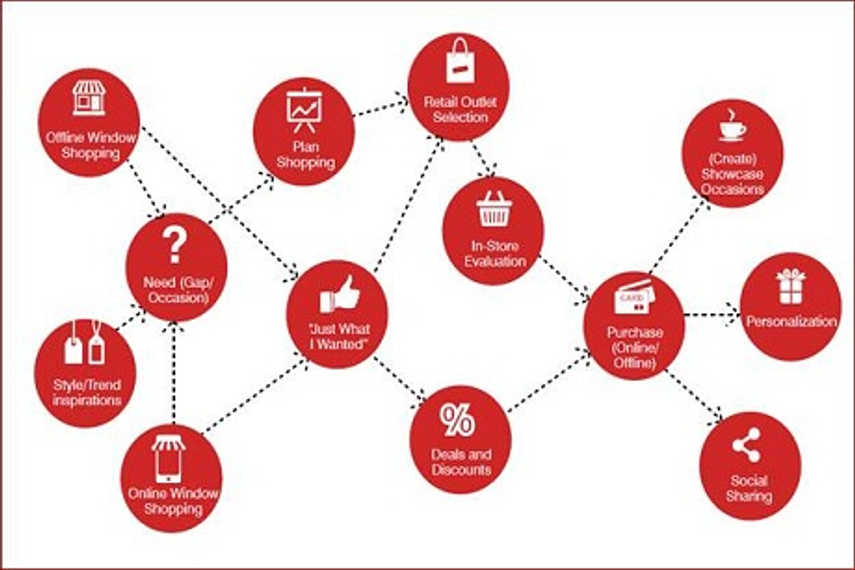Percept Media, in association with Point Logic, Netherlands, has published an All India Shopper Research for 2014. The study was carried out in eight Indian cities - Mumbai, Delhi, Kolkata, Chennai, Ahmedabad, Lucknow, Chandigarh and Ranchi, and included 2673 participants across multiple categories.
On the study, Shripad Kulkarni, CEO, Percept Media said, “There has been a huge change in shopping behavior due to increased usage of digital media and mobile among shoppers. This has led to a non- linear, much more complex Shopper Journey than the traditional brand funnel. We conducted a Qualitative and Quantitative Study to explore insights on purchase behavior of regular shoppers by category and also the role of multiple media touchpoints in their purchase behavior."
He added, "Modern Shoppers are hyperactive and are looking for deals, referrals, expert views fuelled by the information overload of digital media, thus leading to more complexity in brand decision process. As expected, the Shopper Journey for each category is distinct and therefore, has its own set of marcom planning challenges. Understanding the relevance of various media touchpoints during shopper journey for the category, will help a marketer develop the communication approach which leads to optimum performance of each media used. We will use this huge data and insights for the soon to be launched 360 marcom planning tools suite.”
Digital Media
According to the report, which covered 15 distinct categories across 55 touch points, digital media is accepted by most marketers as an essential part of media mix for any category. It increases the reach of the brand by targeting the online population apart from those who consume mostly traditional media. With a majority of shoppers interacting with various mediums, digital media is used to reinforce brand communication in offline media and further build on it, according the report.
The report goes on to highlight that some brands have begun to implement digital-led strategy where all communication converges on brand's website/microsite.
Consumer behaviour change on digital media has led to non-linear, more complex shopper journey than the traditional brand funnel. It has led to three new dimensions to the journey for modern shoppers, namely exploration, best value and reassurance.
The Shoppers Journey
There are primarily three shopping stages, namely, pre-shopping, active shopping and post shopping. The shopper is in a different mindset at each stage of this journey.
Pre-shopping stage - This stage is about dreaming, planning, seeking general information, considering repeat buy etc.
Active shopping stage - Here shoppers get into a ‘hyper active’ phase involving active information search, seeking advice, discussions with friends & family, noticing ads for the category, in-store exploration etc.
Post shopping stage - This stage is about using/ enjoying/ showcasing the purchase, sharing, reassurance, loyalty programs, advocacy etc. But in the new milieu of social media – it is paramount to manage this comprehensively to ensure good buzz and secure the immediate future.
Unless shoppers are in active shopping stage for a particular category, most of the communication they have received about brands in that category is forgotten. However, once shoppers are in active stage, they start recollecting all the information received passively so far. Any remarkable brand impression made during active shopping stage often dictates the final brand choice.
360* media strategy
According to the report, the classical media planning approach does not do justice to the shopper journey. Understanding the relevance of various media touch points during the shopper journey will help marketers develop the Mar-Com approach, which would enable optimum performance of each media used. Challenger brands can gain advantage over leading brands by exploring beyond TV and print media and leverage on other media relevant to the shopper journey. This will result in more optimised media budget utilization and better conversion to purchase.
TV has been traditionally a key ATL media across all categories. However, its role at each of the shopping stages for each category is different. For categories like electronic household (HH) appliance and Holiday packages, it is more important in pre-shopping stage while for cars and cosmetics, it becomes more relevant at active shopping stage. The role of print is much higher in pre-shopping stage for electronic HH appliances and cosmetics.
The role of digital is relatively lower in categories like toiletries, ready-to-eat/cook food items and cosmetics, but is certainly significant enough to be an important part of the media mix. About a fifth of shoppers come across digital media platforms in active stage of buying electronic household appliances, claims the report.
Kulkarni explains, "Marketers often fall in the trap of generic media planning which results in heavy budget allocations on TV which may not be optimal. The optimisation of media mix needs to take into account the suitability and acceptability of each touch point for brand task along the Shopper Journey. A media plan which is sync with shopper journey will help use the same budget on a more suitable media that will deliver the right metrics that will deliver results in the marketplace. Percept Media, in association with Pointlogic, is developing a Tools suite which will handle this specific goal of the most effective 360 media touchpoints allocation."

